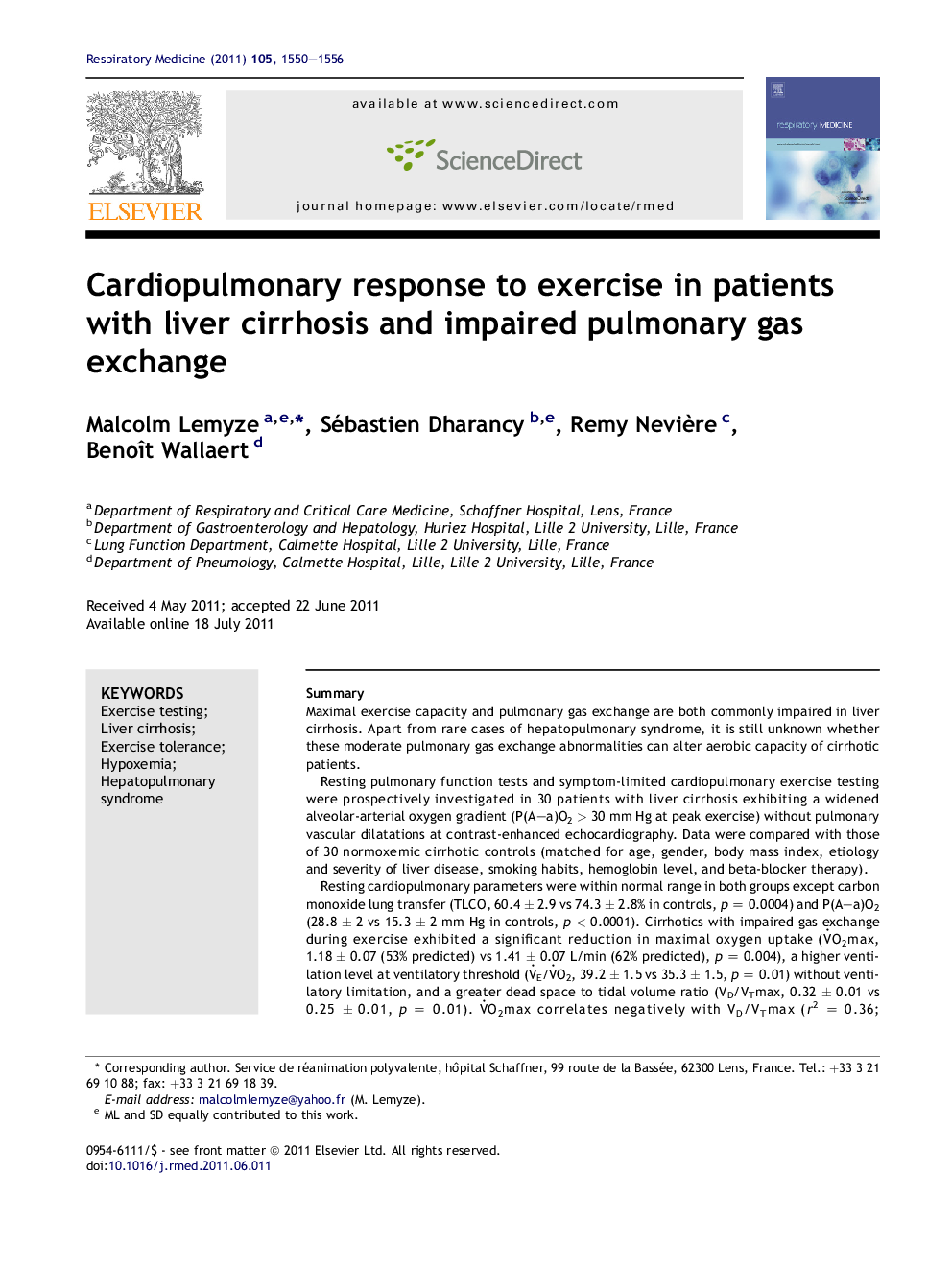| Article ID | Journal | Published Year | Pages | File Type |
|---|---|---|---|---|
| 4210350 | Respiratory Medicine | 2011 | 7 Pages |
SummaryMaximal exercise capacity and pulmonary gas exchange are both commonly impaired in liver cirrhosis. Apart from rare cases of hepatopulmonary syndrome, it is still unknown whether these moderate pulmonary gas exchange abnormalities can alter aerobic capacity of cirrhotic patients.Resting pulmonary function tests and symptom-limited cardiopulmonary exercise testing were prospectively investigated in 30 patients with liver cirrhosis exhibiting a widened alveolar-arterial oxygen gradient (P(A–a)O2 > 30 mm Hg at peak exercise) without pulmonary vascular dilatations at contrast-enhanced echocardiography. Data were compared with those of 30 normoxemic cirrhotic controls (matched for age, gender, body mass index, etiology and severity of liver disease, smoking habits, hemoglobin level, and beta-blocker therapy).Resting cardiopulmonary parameters were within normal range in both groups except carbon monoxide lung transfer (TLCO, 60.4 ± 2.9 vs 74.3 ± 2.8% in controls, p = 0.0004) and P(A–a)O2 (28.8 ± 2 vs 15.3 ± 2 mm Hg in controls, p < 0.0001). Cirrhotics with impaired gas exchange during exercise exhibited a significant reduction in maximal oxygen uptake (VO2max, 1.18 ± 0.07 (53% predicted) vs 1.41 ± 0.07 L/min (62% predicted), p = 0.004), a higher ventilation level at ventilatory threshold (VE/VO2, 39.2 ± 1.5 vs 35.3 ± 1.5, p = 0.01) without ventilatory limitation, and a greater dead space to tidal volume ratio (VD/VTmax, 0.32 ± 0.01 vs 0.25 ± 0.01, p = 0.01). VO2max correlates negatively with VD/VTmax (r2 = 0.36; p < 0.0001). There were no differences in cardiac or metabolic response to exercise between groups.Taken together these findings suggest that clinically undetectable pulmonary vascular disorders can slightly contribute to further reduce exercise capacity of cirrhotic patients.
